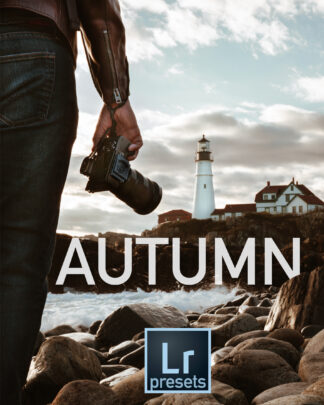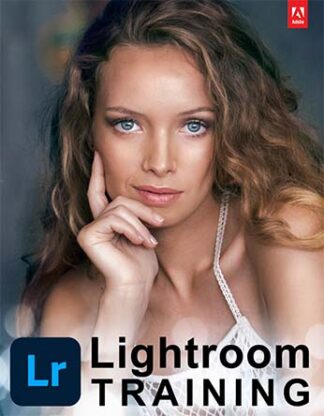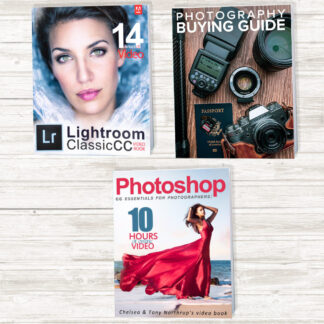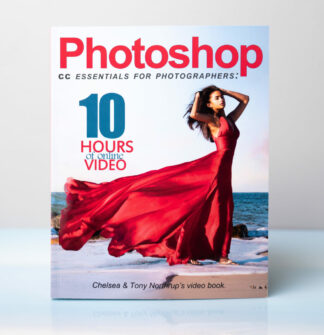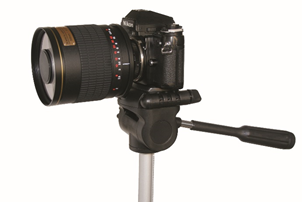 Mirror lenses, such as the Rokinon 500mm f/6.3 (shown here), Rokinon 800mm f/8, and Polaroid 500mm f/6.3, seem to offer incredible value for the money. These lenses each cost about $190 dollars, whereas the Canon 500mm lens costs over $10,000. The mirror lenses are also less than one-third the length and weight, making them easier to carry. Yet, even with a 98% discount, no professionals and very few amateurs use mirror lenses. Why not?
Mirror lenses, such as the Rokinon 500mm f/6.3 (shown here), Rokinon 800mm f/8, and Polaroid 500mm f/6.3, seem to offer incredible value for the money. These lenses each cost about $190 dollars, whereas the Canon 500mm lens costs over $10,000. The mirror lenses are also less than one-third the length and weight, making them easier to carry. Yet, even with a 98% discount, no professionals and very few amateurs use mirror lenses. Why not?
- Manual focus. Mirror lenses cannot autofocus, making them useless for moving wildlife. You can still use them for stationary subjects, but focusing can quickly become annoying.
- High minimum f/stop number. Mirror lenses have a high minimum f/stop number, which means they don’t allow as much light in as other lenses. This requires you to either use a much longer shutter speed (if your camera is on a tripod) or a much higher ISO (which increases noise in the picture). Also keep in mind that the real f/stop number is probably higher than what the lens manufacturer advertises; some mirror lens manufacturers exaggerate this number.
- Fixed aperture. Almost all mirror lenses have a fixed aperture, preventing you from choosing a higher f/stop number to increase the depth-of-field.
- Lack of image stabilization. Most low-cost telephoto lenses don’t have image stabilization. This, combined with the high minimum f/stop number, will require you to either use a tripod or use a very fast shutter speed to prevent camera shake.
- Donut bokeh. Out-of-focus parts of a picture taken with a mirror lens have an unusual “donut” look to them, just like the shape of the lens’ front element. People make a big deal out of this, but I actually don’t think it’s too disturbing.
- Low contrast. The mirror reflections reduce contrast in the photo, so pictures are a bit washed out. You can improve this with some processing, as described in Chapter 5 of Stunning Digital Photography.
The need to manually focus, combined with the shallow depth-of-field of all telephoto lenses and the fast shutter speed required to prevent camera shake, means that you almost always need to use mirror lenses with a tripod. Some people do take hand-held photos of still subjects in bright daylight, but it’s challenging. In a nutshell, you get what you pay for. Usually, you’ll get better overall images by cropping photos taken with an inexpensive telephoto zoom (such as a 75-300mm zoom) than by using a mirror lens. While they’re inexpensive, it’s still a waste if you can’t get pictures that you’re happy with. If you do get a mirror lens, don’t go too inexpensive. Models costing less than $150 will give you terrible image quality.

